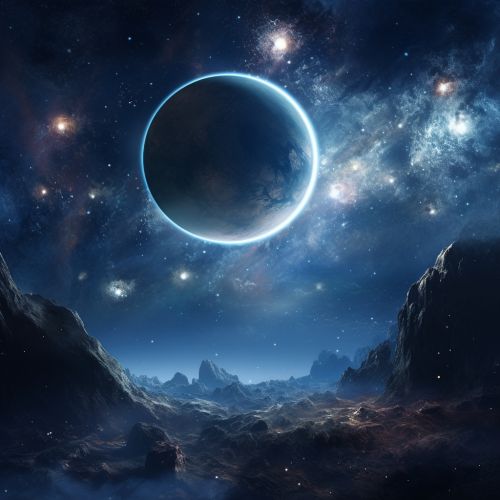Multi-messenger Astronomy
Introduction
Multi-messenger astronomy is a branch of astronomy that involves the coordinated observation and interpretation of disparate "messenger" signals. These signals, or messengers, include electromagnetic radiation, gravitational waves, neutrinos, and cosmic rays. This approach allows for a more comprehensive understanding of astrophysical phenomena and has led to significant advancements in the field of astronomy.


History and Development
The concept of multi-messenger astronomy has been around for several decades, but it was not until the 21st century that the technology and methodologies necessary for its implementation became available. The first successful multi-messenger observation occurred in 1987 with the detection of neutrinos from Supernova 1987A coincident with the observation of light from the explosion. However, the field truly began to take shape with the advent of gravitational wave astronomy in the 2010s.
Messengers
Electromagnetic Radiation
Electromagnetic radiation is the most commonly observed messenger in astronomy. It includes all forms of light, from radio waves to gamma rays. Each type of light provides different information about the celestial object or event that produced it.
Gravitational Waves
Gravitational waves are ripples in the fabric of spacetime caused by the acceleration of massive objects. They were first detected in 2015 by the LIGO and Virgo observatories, marking a significant milestone in multi-messenger astronomy.
Neutrinos
Neutrinos are subatomic particles that are almost unaffected by normal matter, making them ideal messengers for studying phenomena that are difficult to observe through electromagnetic radiation. Neutrino astronomy is a relatively new field, but it has already contributed significantly to multi-messenger observations.
Cosmic Rays
Cosmic rays are high-energy particles from space that strike the Earth's atmosphere. They are primarily protons and atomic nuclei, but also include electrons and positrons. Cosmic ray detection can provide information about high-energy processes in the universe.
Methodology
The methodology of multi-messenger astronomy involves the coordinated observation of different messengers from a single astrophysical event. This requires a global network of observatories capable of detecting and analyzing these messengers. Once an event is detected, alerts are sent out to other observatories to look for corresponding signals in their data.
Notable Observations
There have been several notable multi-messenger observations in recent years. The first detection of gravitational waves from a binary neutron star merger, GW170817, was also observed electromagnetically, providing a wealth of information about this previously unobserved phenomenon. Another significant observation was the detection of a high-energy neutrino coincident with a blazar flare in 2018, marking the first time a neutrino source outside our galaxy was confirmed.
Future Prospects
The future of multi-messenger astronomy is promising, with several new observatories and detection methods in development. These advancements will allow for the observation of previously undetectable messengers, such as ultra-high-energy neutrinos and gravitational waves from the early universe. This will further our understanding of the universe and potentially lead to new discoveries.
